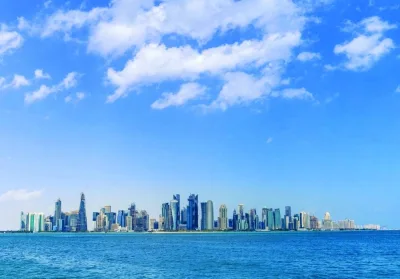Capital Intelligence (CI), an international credit rating agency, has affirmed the long-term foreign currency rating (LT FCR) of Qatar Islamic Bank (QIB) at ‘A+’.
It also adjusted QIB’s short-term foreign currency rating (ST FCR) to ‘A1’ from ‘A2’. The lender has also been assigned a bank standalone rating (BSR) of ‘a-’, a core financial strength (CFS) rating of ‘a-’ and an extraordinary support level (ESL) of 'high".
The outlook for the LT FCR and BSR is "stable".
QIB’s LT FCR is set two notches above the BSR to reflect the high likelihood of extraordinary support from the government in the event of financial distress. This is based on the government’s strong track record of support for Qatari banks.
At different points in time, such support has included the transfer of ‘difficult investments’ to the state, the transfer of realty loans and the injection of additional equity. Most recently, all banks were able to rely on a sharp increase in government deposits to stave off any liquidity pressures following the June 2017 blockade led by Saudi Arabia and the UAE.
QIB’s BSR is based on a CFS rating of ‘a-’ and an operating environment risk anchor (OPERA) of ‘bbb’. The CFS rating is supported by very good asset quality, strong capitalisation and good profitability at both the operating and net levels.
Non-financial supporting factors include a strong franchise as the leading Islamic bank in Qatar (also as the second largest bank in the system), and a high-quality management team.
These strengths are to a limited extent counterbalanced by higher than average dependence on wholesale funding, by the high financing exposure to the real estate sector, and by concentrations in both deposits and financings.
The OPERA takes into account both current and projected economic and financial conditions in Qatar, as well as the strengths and weaknesses of the banking sector, CI said.
The very strong asset quality is underlined by one of the lowest non-performing financing receivables (NPFR) ratios in the banking system (and the lowest among the six banks rated by CI at just 1.1%, although the level of Stage 2 financings at end 2018 is a little high (albeit below sector average) at just over 13% of gross financings.
Although this may indicate the possibility of increased growth in NPFRs this year, QIB's credit loss absorption capacity is strong, given substantial financing loss reserves and good operating profit.
CI said capitalisation in terms of capital adequacy ratio is strong, although there is a higher than average AT-1 (additional Tier-I) component. Internal capital generation is satisfactory with the dividend payout ratio being under 50% in respect of 2018 earnings. The Basel III leverage ratio at end 2018 was strong at 11.6%.
Liquidity is a lesser supporting factor; QIB has superior liquidity ratios by Qatar standards, but this is in the context of a sector that has historically had fairly tight liquidity ratios and where the dependence on wholesale (often foreign) funding has been increasing, especially for the larger banks such as QIB.




